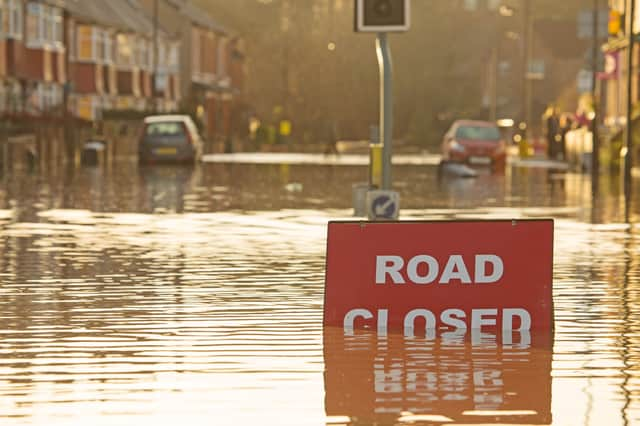These are the communities at risk of evacuation as flood threat increases


Whole communities could be forced to move because of the risk of serious long-term flooding, the Environment Agency has warned.
Chairwoman Emma Howard Boyd said that rising water levels caused by global warming could displace people in the UK.
Planners told to prepare for the worst
Advertisement
Hide AdAdvertisement
Hide AdShe said that England’s flood planners must prepare for the worst as current trends suggest the global temperature could rise between 2C and 4C by the year 2100. This would mean the country would need to spend £1 billion per year to protect homes from floods.
The communities most at risk of long-term flooding, according to government statistics, are primarily coastal regions, however riverside and floodplain areas inland are also under serious threat.
The areas most at risk
Key areas include significant portions of eastern England and Yorkshire.
Peterborough and the surrounding areas are considered to be among the most threatened, with many of the riverside communities there being labelled high risk.
Advertisement
Hide AdAdvertisement
Hide AdThe coastal regions to the north east of Peterborough and along the Lincolnshire coast - including Holbeach St Matthew and Gedney - are also considered some of the most in danger from flooding.
Parts of Yorkshire near Doncaster and Wakefield have been deemed high risk areas, in particular Knottingley and Castleford, as well as regions further north, around Hull.
The Lancashire and West Cumbria coasts, too, are highlighted, as are areas further to the south of England including parts of Kent, Cornwall, Somerset, Essex and Norfolk.
Launch of agency plan
The Environment Agency estimates that for every one person who suffers flooding, another 16 are affected by power outages and other infrastructure failures.
Advertisement
Hide AdAdvertisement
Hide AdMs Howard Boyd, launching the consultation on the agency’s strategy for combating long-term flood risk, said that the government needs to make sure that all publicly-funded infrastructure is resilient to flooding and coastal change by 2050.
“We can’t win a war against water by building away climate change with infinitely high flood defences,” she said.
She also called for property developers to rebuild homes after flooding in better locations and to include things like raised electrics, hard floor and flood doors.
However, she warned that in some places "the scale of the threat may be so significant that recovery will not always be the best long term solution" and communities would need help to "move out of harm's way".
Government response
Advertisement
Hide AdAdvertisement
Hide AdEnvironment Minister Therese Coffey said, “Flooding and coastal erosion can have terrible consequences for people, businesses and the environment.
"That’s why we are already providing £2.6bn over six years, delivering more than 1,500 projects to better protect 300,000 homes.”
But she added that "the threat of climate change will mean an increasing risk and preparing the country is a priority for the government, and the nation as a whole".
This article originally appeared on our sister site, The Yorkshire Post